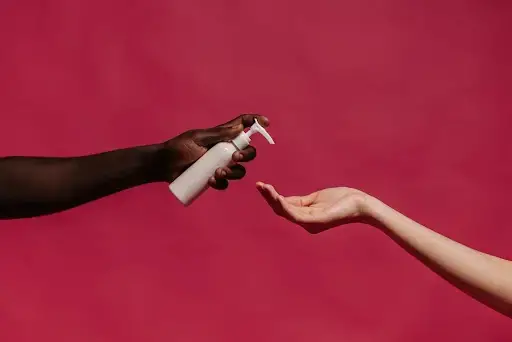Do you love using self-tanners, but are unsure if they expire? This is a question that many people ask. Self-tanners can give your skin a beautiful, sun-kissed glow while avoiding harmful UV rays.
If you use an expired product you may end up with uneven results. We’ll answer your question about whether self-tanners expire and tell you everything you need to learn about sunless tanners in this article.

DOES Self-Tanner Expire?
Yes, self-tanner does expire. Self-tanners usually have a shelf-life of 12-18 months. Over time, the effectiveness of the product may decrease and the color could become streaky or patchy. A self-tanner that is expired can cause irritation to the skin or allergies. Check the expiration date of the product before using it to avoid any problems.
DHA (dihydroxyacetone), the main ingredient in self-tanners, is no longer at its best and cannot produce melanoidins when reacting with amino acids on your body. The lighter your skin, the fewer melanoidins you have.
DHA becomes denser as the liquid in self-tanners evaporates. The color may be altered, and the tanning quality will not be the same. The condensed DHA is to blame for the poor quality of tanning.
These products are heavily preserved. When these substances degrade, other ingredients will be outdated as a consequence.
Different brands may have different ingredient profiles, which could explain the differences in expiration dates.
HOW LASTING ARE SELF-TANNERS?
Yes, self-tanner does expire. Self-tanners usually have a shelf-life of 12-18 months. Over time, the effectiveness of the product may decrease and the color could become streaky or patchy.
A self-tanner that has expired can cause irritation to the skin or even allergic reactions. Check the expiration date of the product before using it to avoid any problems.
How long will a self-tanner that has not been opened last?
The shelf life of most cosmetics is determined by the date of purchase, not when it was opened. The expiry date of a product is not counted if you haven’t opened it yet, because the product hasn’t been exposed to the air.
You can also check the expiration date by reading the label carefully, or asking a salesperson when you purchase the product.
What’s more? The packaging and format of the product will determine how quickly or slowly it expires.
MOUSSE
Mousses are packaged in containers that have a pump. Packaging that minimizes the product’s air exposure will extend its shelf life.

LOTIONS
Since they must be exposed to air each time they are open, lotion products will expire faster.
The mousse bottle is only exposed to the air when you pump it. However, the lotion bottle must be kept open until the product has been applied.
TOWELETTES
Towelettes are usually out-of-date one year after they have been opened. You can still keep the towelettes longer if they are rarely opened. The towelettes, on the other hand, will dry out before 12 months when exposed to air.
WHAT HAPPENS WHEN YOU USE A SELF-TANNER THAT IS EXPIRED?
Self-tanners are free of harmful chemicals. does not have any harmful effects on the skin, even after the expiry.
You should toss those products if they are past their expiration date. The expiration date was given for a good reason.
You may experience unexpected results if you use the product. Expired fake tan will be less consistent, causing your skin to look patchy.
Some products may have different ingredients which degrade over a longer period of time, leading to a change in the chemical composition. These changes may cause a minor skin reaction or rash, especially if your skin is sensitive.
If this happens, wash the lotion off your skin immediately and apply to treat irritation.
Use a patch test whenever you suspect a product is expired to ensure your skin’s safety.

HOW TO KNOW IF THE SELF-TANNER IS EXPIRED?
Some self-tanners have a use-by date while others do not. You need to keep in mind the date that you opened the product so you can approximate the expiration date.
Here are some easy ways to determine if the self-tanner has expired in case you forgot to mark the time.
The Color
The easiest way to determine if an item is still useful is by testing its color. Check to see if the color has become darker or lighter since the first purchase.
Self-tanners that are green have nothing to with your skin. Heat and air exposure has degraded DHA causing the color change.
THE CONSISTENCY
The consistency of the product changes as the oil layer and the other ingredients separate over time.
When you apply the fake tanning, it will look more watery and lumpy than when first applied.
This is not a sign you can rely on. You can sometimes shake hard to bring the separation back to normal.
THE Sniff Test
The DHA products may make this test more difficult to perform than others, due to their unpleasant smell.
If you are able to notice a change in the scent of the tanner, then it’s likely that it has expired.

PATCH TEST
Test the condition of a product by applying it on a small area of skin to see if it still has the color and texture that you are expecting.
If you notice that the lotions have caused your skin to be uneven, it is best to throw them out.
How to best preserve your self-tanner?
To maintain the shelf life of your products, you can follow these simple steps.
- Store your items at a low temperature. If you live in an area with a humid and hot climate, keep this in mind.
- After each use, close the lid tightly to limit air exposure and prevent bacteria from entering the product.
- Some tanning products contain alcohol which will react with substances.
- Avoid exposing the fake-tan containers to direct sun.
Alternatives to Self-Tanning
There are many ways to get a sun-kissed tan without exposing yourself to the sun. Alternatives include:
- Bronzer is a cosmetic that gives skin color without altering its tone. Bronzer is available in powder, cream and liquid forms.
- Spray Tan: This is a temporary solution which involves spraying self-tanner in a fine mist onto the skin. Results usually last up to a week.
- Tanning bed: A machine emitting UV radiation that darkens the skin. Tan tanning beds may increase your risk of skin cancer, premature aging and skin cancer.
STEP BY STEP GUIDE FOR USING A SELF-TANNER
- To ensure a uniform application, exfoliate the skin before applying self-tanner.
- To prevent the color from being absorbed too quickly, apply a moisturizer on dry areas like elbows, ankles and knees.
- Use circular motions to apply the self-tanner, beginning with your legs and moving up your face.
- Avoid staining hands by using a tanning glove or mitt.
- Before dressing, wait until the product has dried completely.
- After application, avoid showering or swimming at least six to eight hours to allow color to develop.
COMPARISON: SELF-TANNING VS. SUNBATHING VS. SELF-TANNING
SELF-TANNING:
- No exposure to UV harmful rays
- Get a natural looking tan, without risking sunburn or damage to your skin
- It can be used all year round
- Results can last for up to a week
SUNBATHING:
- Sun exposure can cause skin cancer, sunburn, and premature aging.
- Spending time outside at specific times during the day or year
- The results can be uneven and patchy
- Tans usually fade in a matter of days
FAQS
How often should I replace my self-tanner?
To ensure maximum effectiveness, it’s a good idea to replace self-tanners every 6-12 month, even if they haven’t expired.
How long does fake tan last before it expires?
Self-tanner’s effects can last anywhere from one week to ten days depending on the intensity of the color you want. More specifically, lighter shades last about 5 days, medium shades for about 7 to 8 days and darker shades for around 10 days.
Sometimes, hands, feet, and face need to be reapplied after 3-4 days. Applying moisturizer after tanning daily is the best way to keep your desired result.
Exfoliating your skin before tanning will help the cream to penetrate faster into the skin.
The fake tan will last as long as you like, depending on the shade of skin that you choose.
WHAT IS THE EXPIRATION DATES FOR TANNING LOCATIONS?
The date of expiry of the tanning is clearly visible on the back of each container.
You can also find this information on product packaging, with an open box symbol, and the abbreviation “M” for “Month,” which means that you can use the item for 12 months after it has been opened.
CONCLUSION
Self-tanners do expire. Using an expired product may cause skin irritation or allergic reactions, as well as uneven or patchy results. You can achieve the best results by storing your self-tanner properly and replacing it regularly.
It is possible to achieve a healthy-looking glow by sunless tanning without having to expose your skin to UV rays. You can have a sun-kissed skin all year round by following these tips and using the best self-tanners.


